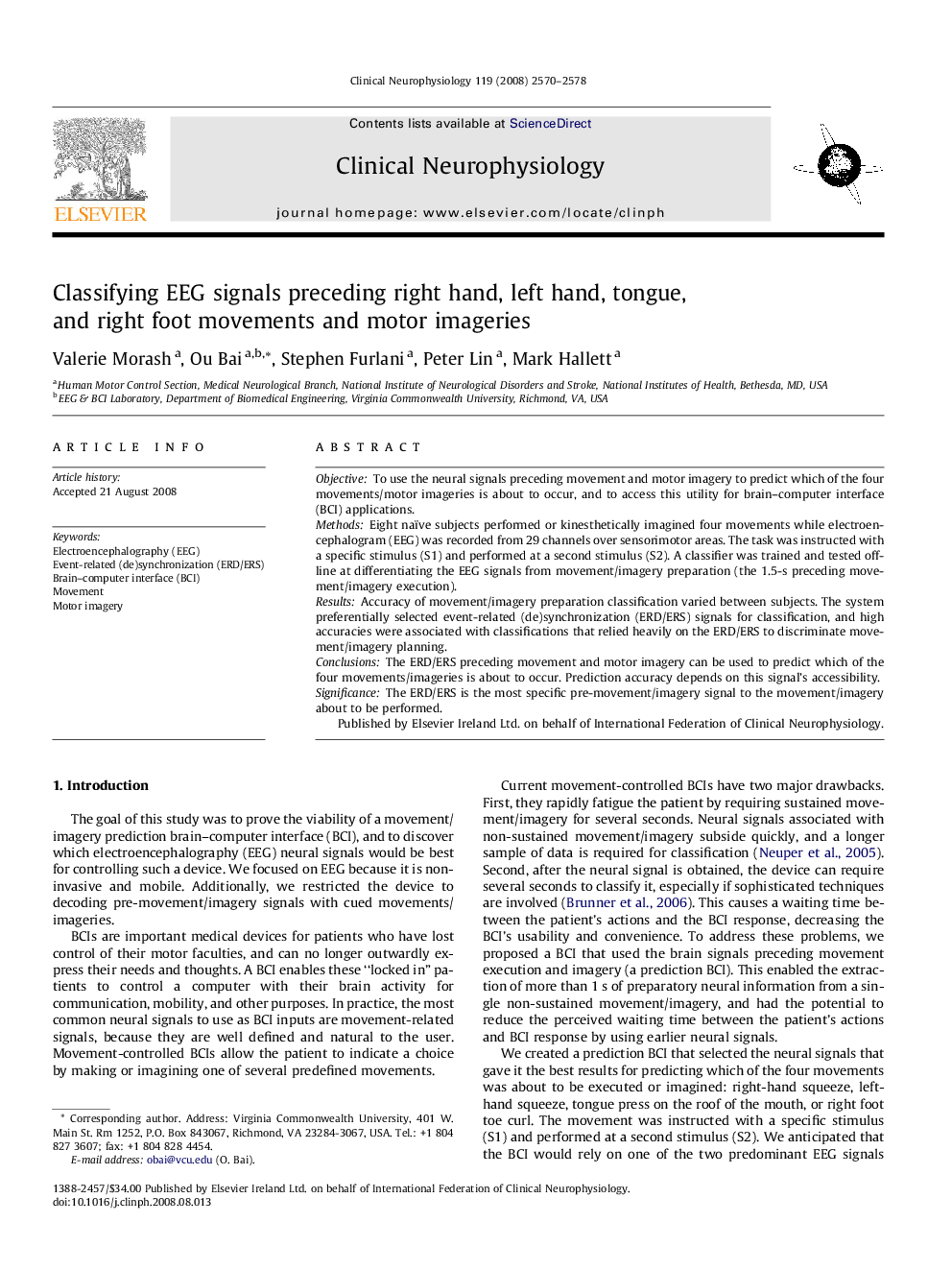| Article ID | Journal | Published Year | Pages | File Type |
|---|---|---|---|---|
| 3047018 | Clinical Neurophysiology | 2008 | 9 Pages |
ObjectiveTo use the neural signals preceding movement and motor imagery to predict which of the four movements/motor imageries is about to occur, and to access this utility for brain–computer interface (BCI) applications.MethodsEight naïve subjects performed or kinesthetically imagined four movements while electroencephalogram (EEG) was recorded from 29 channels over sensorimotor areas. The task was instructed with a specific stimulus (S1) and performed at a second stimulus (S2). A classifier was trained and tested offline at differentiating the EEG signals from movement/imagery preparation (the 1.5-s preceding movement/imagery execution).ResultsAccuracy of movement/imagery preparation classification varied between subjects. The system preferentially selected event-related (de)synchronization (ERD/ERS) signals for classification, and high accuracies were associated with classifications that relied heavily on the ERD/ERS to discriminate movement/imagery planning.ConclusionsThe ERD/ERS preceding movement and motor imagery can be used to predict which of the four movements/imageries is about to occur. Prediction accuracy depends on this signal’s accessibility.SignificanceThe ERD/ERS is the most specific pre-movement/imagery signal to the movement/imagery about to be performed.
